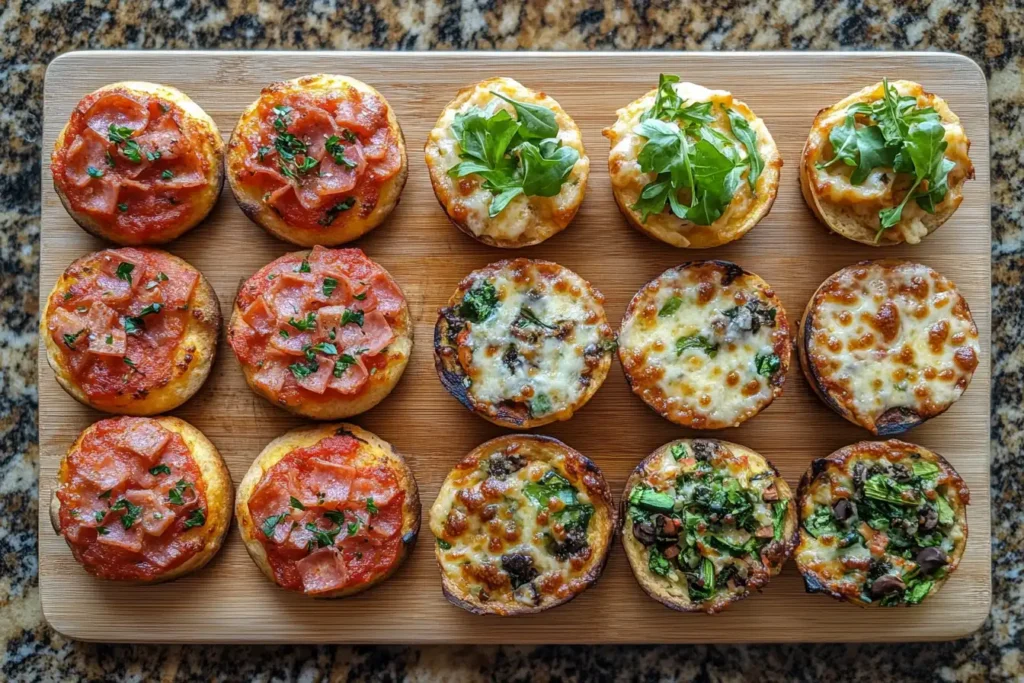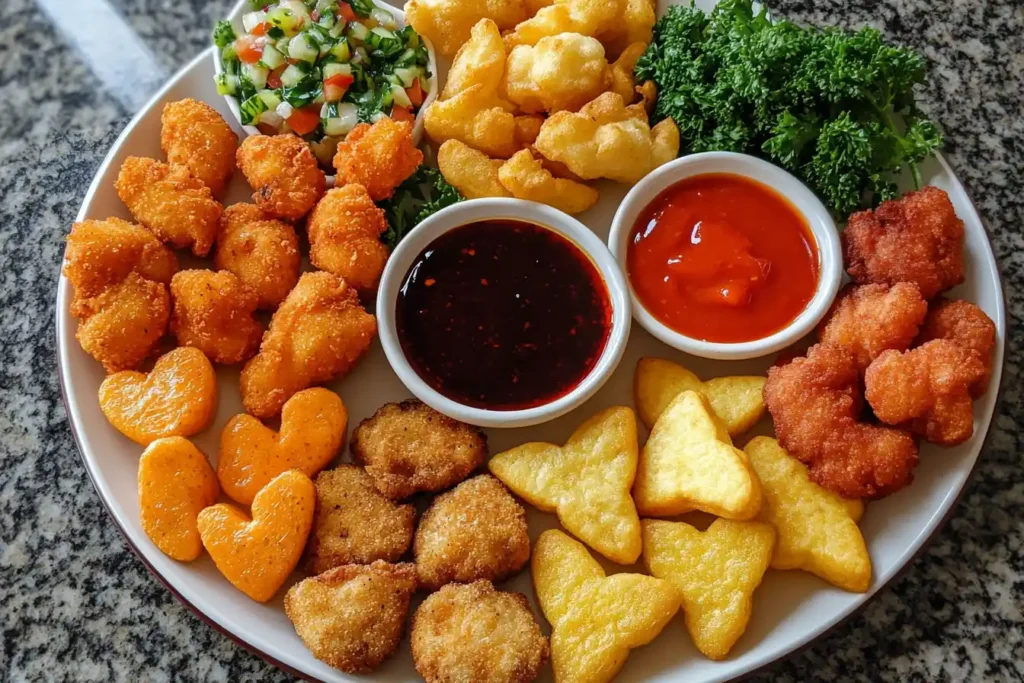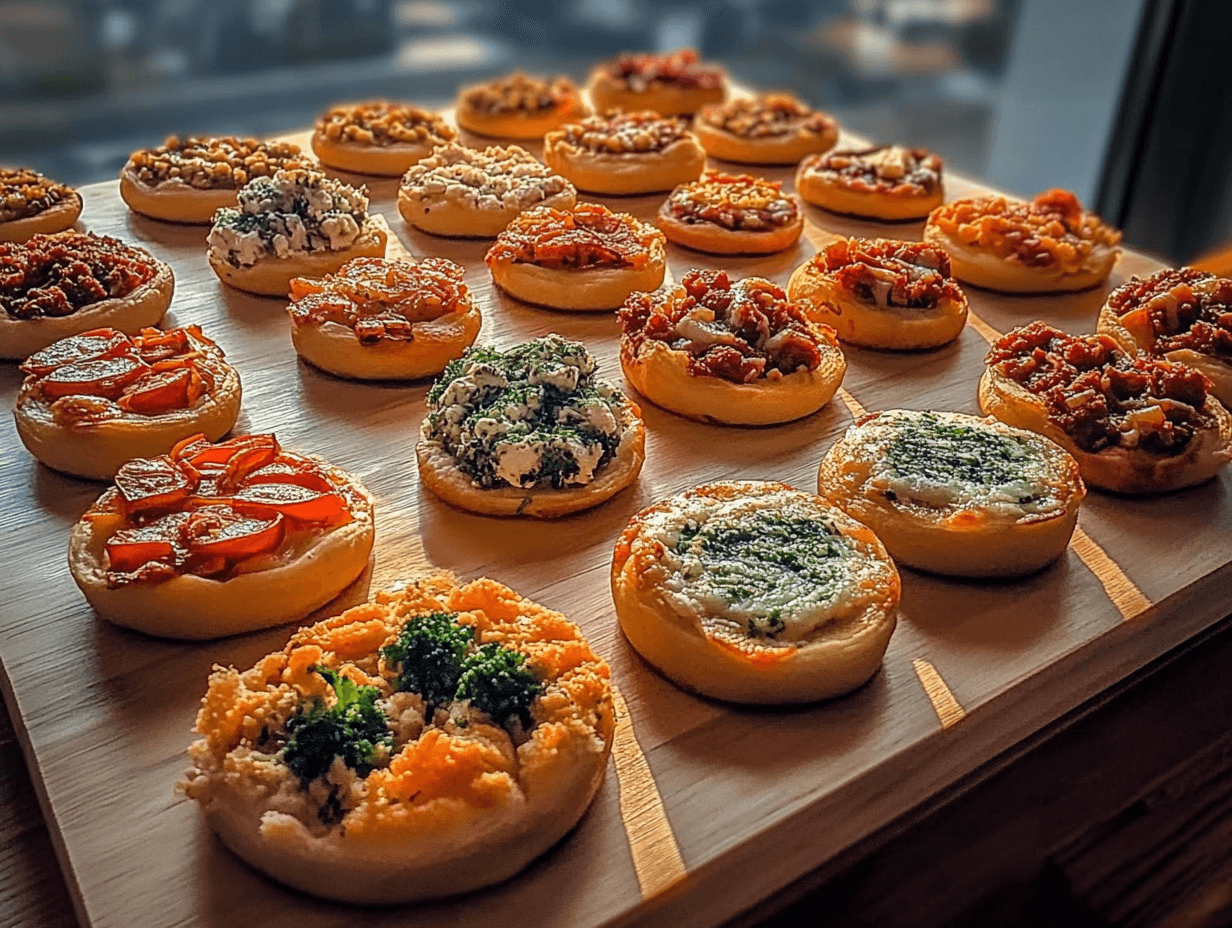Mealtime for toddlers can be a challenge, leaving many parents asking, “What to feed toddler for lunch finger food?” Finger foods are an ideal solution because they are easy for little hands to manage and encourage self-feeding. This article offers a comprehensive guide to help you make the best choices.
This article dives into the best options for toddler-friendly lunch finger foods, offering practical tips and ideas that will keep your child happy, healthy, and excited to eat.
Table of Contents
Nutritional Guidelines for Toddler Lunch Finger Foods
When considering what to feed toddler for lunch finger food, it’s essential to focus on nutrition. These meals can deliver all the key nutrients your growing child needs while being fun and easy to eat.
Essential Nutrients for Toddlers
- Protein: Crucial for muscle and tissue growth. Include sources like eggs, chicken, fish, beans, and dairy products.
- Healthy Fats: Necessary for brain development. Look to avocados, nuts (in butter form), and olive oil for inspiration.
- Carbohydrates: Provide energy for your toddler’s active day. Opt for whole grains like bread, pasta, and rice.
- Vitamins and Minerals: These boost immunity and overall health. Incorporate fruits, veggies, and fortified foods for variety.
- Calcium and Iron: Essential for strong bones and blood health, respectively. Yogurt, cheese, and leafy greens are excellent options.
Balancing Taste and Nutrition
It’s easy to fall into the trap of serving only what your toddler loves (hello, mac and cheese!). However, a little creativity can go a long way. Aim for meals that are:
Kid-friendly but nutritious: For example, offer a mini pizza loaded with veggies or fruit skewers alongside cheese cubes.
Colorful: A mix of hues appeals to toddlers and ensures a variety of nutrients.
Texture-rich: Combine crunchy, soft, and chewy foods to keep things interesting.
Benefits of Finger Foods for Toddlers
Finger foods aren’t just a convenient option; they play an essential role in your toddler’s overall development. Here’s how:
Encouraging Independence
Toddlers are naturally curious and love doing things on their own. Finger foods let them take charge of eating, fostering a sense of independence. By letting your child feed themselves, you’re helping them build confidence while also developing important life skills.
Enhancing Motor Skills
Grasping tiny pieces of food sharpens a toddler’s fine motor skills, including their pincer grasp (using the thumb and forefinger to pick up small objects). These skills are foundational for tasks like holding crayons, writing, and even tying shoelaces later on.
Top Finger Food Ideas for Toddler Lunch
Creating a balanced and exciting menu is easier than it seems when you know what to feed toddler for lunch finger food. Here’s a roundup of the best finger food options across key food groups.
Protein-Rich Options
Protein is essential for growth, and these fun, easy-to-eat foods are a hit with toddlers:
- Mini Chicken Bites: Cut grilled chicken into small cubes or strips. Add a sprinkle of mild seasoning to enhance flavor without overwhelming their taste buds.
- Cheese Cubes: Choose soft cheeses like cheddar or mozzarella. These are not only tasty but also a great source of calcium.
Fruit and Vegetable Finger Foods
Introduce a rainbow of fruits and veggies to make your toddler’s plate visually appealing and nutrient-packed:
- Cucumber Slices: Cut into thin, round slices or create fun shapes using cookie cutters.
- Berry Mix: Strawberries, blueberries, and raspberries are bite-sized, naturally sweet, and loaded with antioxidants. Wash and serve them fresh.
Whole-Grain Options
Whole grains provide energy and keep your toddler full longer. Try these ideas:
- Mini Sandwiches: Use whole-grain bread and fill them with mashed avocado, soft cheese, or a thin layer of nut butter. Cut them into small squares or triangles for easy handling.
- Whole-Grain Crackers: Pair with hummus or soft cheese for a snack that feels like a treat.
Easy and Healthy Homemade Recipes for Toddler Finger Foods

If you’re wondering what to feed toddler for lunch finger food that’s both healthy and easy to prepare, try these simple homemade recipes. They’re designed to provide variety and ensure your toddler gets the nutrients they need.
Homemade Mini Pizzas
Ingredients:
- 1 whole-grain English muffin (split into halves)
- 2 tablespoons tomato sauce
- 2 tablespoons shredded mozzarella cheese
- Optional toppings: diced bell peppers, small broccoli florets, or chopped cooked chicken
Instructions:
- Preheat your oven to 375°F (190°C).
- Spread a thin layer of tomato sauce over each muffin half.
- Sprinkle shredded mozzarella cheese evenly on top.
- Add toddler-friendly toppings like small veggie pieces or cooked chicken.
- Bake for 8–10 minutes, or until the cheese is melted and bubbly.
- Cool slightly before serving to ensure they’re easy to handle.
These mini pizzas are fun to eat, customizable, and packed with nutrients, making them a perfect lunchtime option.
Veggie-Loaded Mini Muffins
Ingredients:
- 1 cup grated zucchini
- 1/2 cup grated carrot
- 1 cup whole-grain flour
- 1/2 teaspoon baking powder
- 1/2 teaspoon baking soda
- 1 egg
- 1/4 cup olive oil
- 1/4 cup plain yogurt
Instructions:
- Preheat your oven to 350°F (175°C) and grease a mini muffin tin.
- In a mixing bowl, combine the grated zucchini and carrot. Squeeze out excess moisture using a clean towel.
- Add the flour, baking powder, and baking soda to the vegetables and mix well.
- In a separate bowl, whisk together the egg, olive oil, and yogurt. Combine with the dry ingredients.
- Spoon the batter into the muffin tin, filling each cup about 3/4 full.
- Bake for 12–15 minutes, or until the muffins are golden and firm to the touch.
- Let them cool before serving.
These muffins are a great way to sneak in vegetables while providing a soft, easy-to-grasp snack.
Foods to Avoid When Preparing Toddler Finger Foods
While finger foods are a great way to encourage healthy eating habits and independence, there are certain foods you should avoid to ensure your toddler’s safety and nutritional needs are met. Here’s what to watch out for:
High-Sugar Snacks
Sugary foods and drinks can lead to energy spikes and crashes, not to mention cavities. Avoid snacks like:
- Candy and Chocolate: These are high in sugar and offer little nutritional value.
- Sugary Cereals or Granola Bars: Look for low-sugar alternatives with whole grains instead.
- Sweetened Yogurts: Opt for plain or unsweetened versions and sweeten them naturally with fresh fruit.
Instead, choose naturally sweet options like fresh fruit or homemade treats like banana oat bites.
Choking Hazards
Toddlers are still learning to chew and swallow properly, so certain foods can pose choking risks. Be cautious with:
- Hard or Crunchy Foods: Raw carrots, whole nuts, or popcorn can be dangerous. Instead, steam veggies until soft or use nut butters.
- Round or Slippery Foods: Whole grapes, cherry tomatoes, or hotdog slices should be cut into small, manageable pieces.
- Sticky Foods: Large spoonfuls of peanut butter or chunks of chewy candy can be hard for toddlers to manage.
Always monitor your child during meals to ensure they’re chewing and swallowing safely.
Foods with Too Much Salt or Seasoning
Toddlers’ kidneys are not equipped to handle large amounts of salt. Avoid processed foods like:
- Packaged Snacks: Chips and pretzels are often loaded with sodium.
- Canned Foods: Choose low-sodium or no-salt-added options when using canned vegetables or beans.
Instead, flavor meals with herbs, mild spices, or natural seasonings like lemon juice.
Foods with Artificial Additives
Preservatives, artificial colors, and flavors are common in many processed foods and snacks. They may cause digestive upset or behavioral issues in some children. Stick to whole, minimally processed foods whenever possible.
Tips for Making Finger Foods Appealing

Toddlers can be picky eaters, but with a little creativity, you can turn mealtime into a fun and exciting experience. The way food is presented can make all the difference in capturing your child’s interest and encouraging them to try new things. Here are some effective tips to make finger foods irresistible:
Colorful Presentation
Children are naturally drawn to vibrant, colorful things—food is no exception. A mix of bright fruits, vegetables, and other ingredients makes the plate more appealing. Try:
- Rainbow Platters: Arrange foods by color. For example, red cherry tomatoes, orange carrot sticks, yellow cheese cubes, green cucumber slices, and blueberries.
- Fruit Skewers: Use safe, child-friendly skewers (or toothpicks with rounded edges) to create colorful fruit kebabs.
A visually stunning plate isn’t just fun—it’s also a great way to ensure your toddler gets a variety of nutrients.
Fun Shapes and Textures
Shapes and textures can transform plain food into a playful experience. Consider:
- Cookie Cutters: Use these to turn sandwiches, pancakes, or even cheese slices into stars, hearts, or animals.
- Crunchy and Soft Combos: Pair crackers with soft dips like hummus, or crispy apple slices with creamy nut butter.
Experimenting with textures and shapes helps develop your toddler’s sensory awareness and makes them more open to trying new foods.
Create a Theme
Toddlers love themes! A “picnic lunch” served on a blanket or a “beach lunch” with foods shaped like fish or shells can make eating exciting. Use themed containers, plates, or napkins to add to the fun.
Use Dipping Sauces
Dips add an interactive element to mealtime, which toddlers enjoy. Offer healthy options like:
- Yogurt-Based Dips: Mix plain yogurt with a little honey or fruit puree.
- Vegetable Dips: Hummus, guacamole, or a mild salsa can make veggies more appealing.
Providing a small container for dipping also helps keep things neat and tidy.
Serve Small Portions
Toddlers can feel overwhelmed by large portions. Start with small, manageable amounts of food and offer more if needed. Mini portions are also easier for small hands to handle.
Rotate New Foods Gradually
Introducing new foods can be tricky. Instead of overwhelming your toddler with an entirely unfamiliar plate, mix one or two new items with their favorites. For example, if they love cheese cubes, pair them with a few slices of steamed zucchini.
Frequently Asked Questions
How Often Should Toddlers Have Finger Foods for Lunch?
Finger foods can be a daily part of your toddler’s lunch! They are a great way to provide variety and independence at mealtime. Aim for a balanced mix of protein, fruits, vegetables, and whole grains. Offering finger foods for lunch also helps reduce mealtime struggles and keeps things engaging for your child.
What Should I Do If My Toddler Is a Picky Eater?
Dealing with a picky eater can be challenging, but patience is key. Try these strategies:
- Introduce New Foods Slowly: Pair unfamiliar foods with their favorites to make them less intimidating.
- Make It Fun: Use colorful presentations and fun shapes to spark curiosity.
- Set an Example: Eat the same foods together to encourage imitation.
Remember, toddlers may need multiple exposures to a new food before they accept it, so don’t give up too quickly.
Are Finger Foods Safe for Toddlers?
Finger foods are generally safe for toddlers as long as they are age-appropriate. Avoid foods that pose a choking hazard, such as whole grapes, raw carrots, or large chunks of meat. Always supervise your child during meals and cut foods into small, manageable pieces.
Can I Include Desserts as Finger Foods for Toddlers?
Yes, desserts can be included occasionally, but opt for healthier options. Examples include:
- Mini fruit muffins made with whole grains and natural sweeteners.
- Small pieces of banana or apple slices with a drizzle of peanut butter.
Limit sugary or processed desserts and focus on nutrient-rich alternatives.
How Can I Encourage My Toddler to Eat More Vegetables?
Incorporate vegetables creatively into finger foods:
- Add grated zucchini or carrots to mini muffins.
- Serve veggie dips like hummus alongside colorful bell pepper strips or cucumber slices.
- Use fun shapes and sizes, like flower-shaped carrot slices or broccoli “trees.”
Making vegetables fun and tasty is often the best way to encourage toddlers to eat them.
Related Articles for Toddler Lunch Ideas
When planning finger food lunches for toddlers, you might find inspiration and helpful tips in these related articles:
- Ultimate Guide to Toddler Lunch Ideas – This comprehensive guide offers creative and nutritious options tailored to little ones.
- What is an Easy Lunch for Fussy Kids? – Learn how to prepare simple, appealing meals that even picky eaters will enjoy.
- Mini Pancakes: The Ultimate Guide to Making Bite-Sized Breakfast Treats – Discover how mini pancakes can double as a fun and portable lunch option for toddlers.
These articles provide practical ideas and recipes that align perfectly with creating balanced, finger-friendly meals for toddlers.
Conclusion
With these finger food ideas, you can easily create nutritious and enjoyable lunches for your toddler. From protein-packed bites to colorful fruits and veggies, these options keep mealtime fun while supporting healthy eating habits. Finger foods not only encourage independence but also help develop essential motor skills, making lunchtime a stress-free and rewarding experience for both you and your little one.
